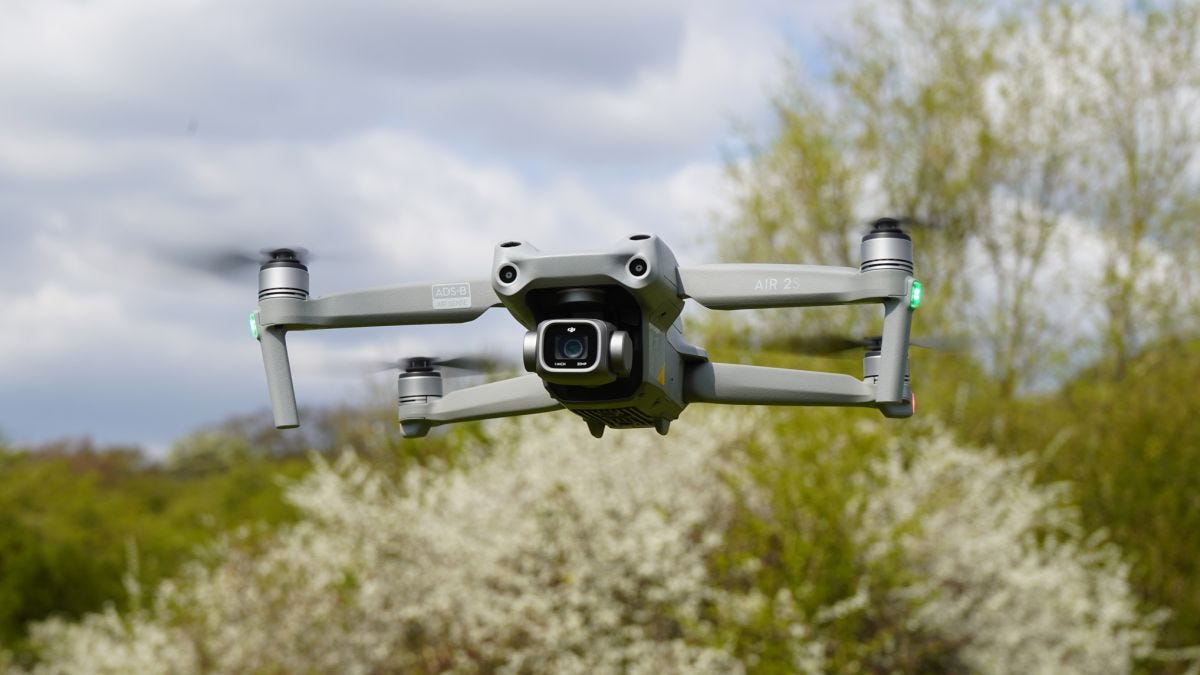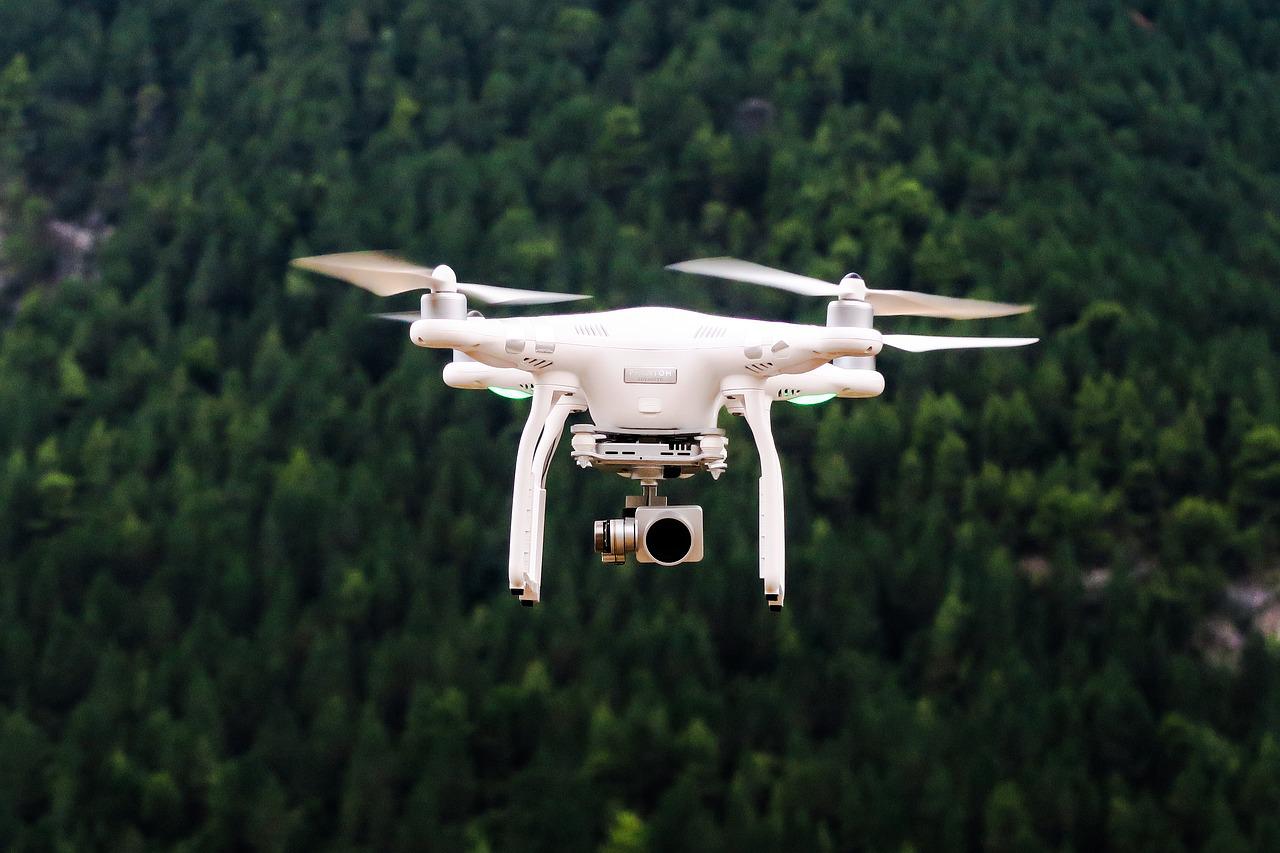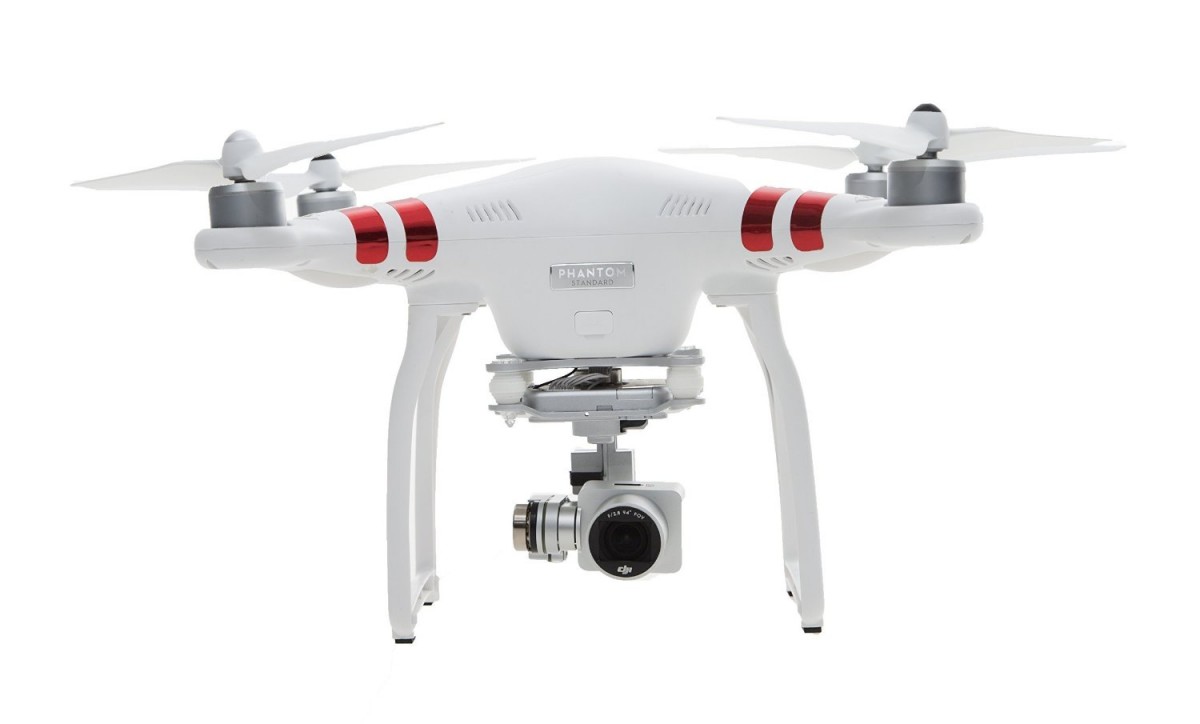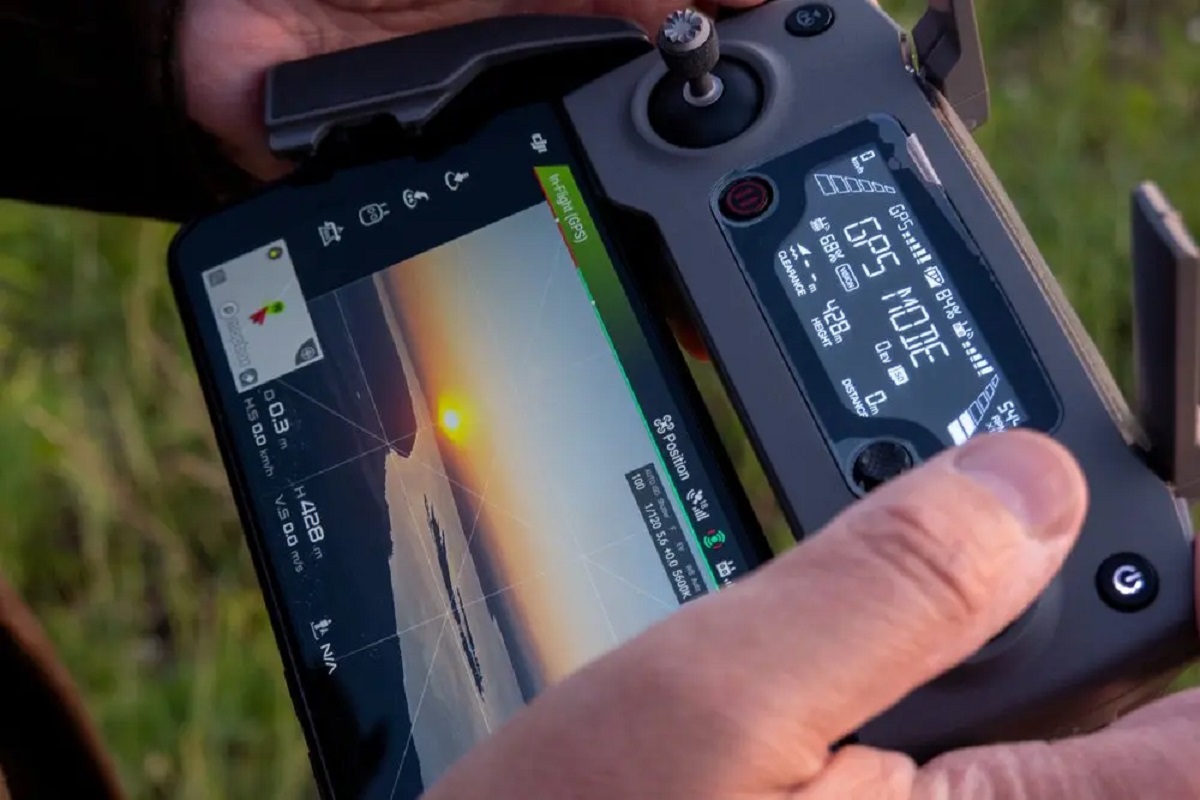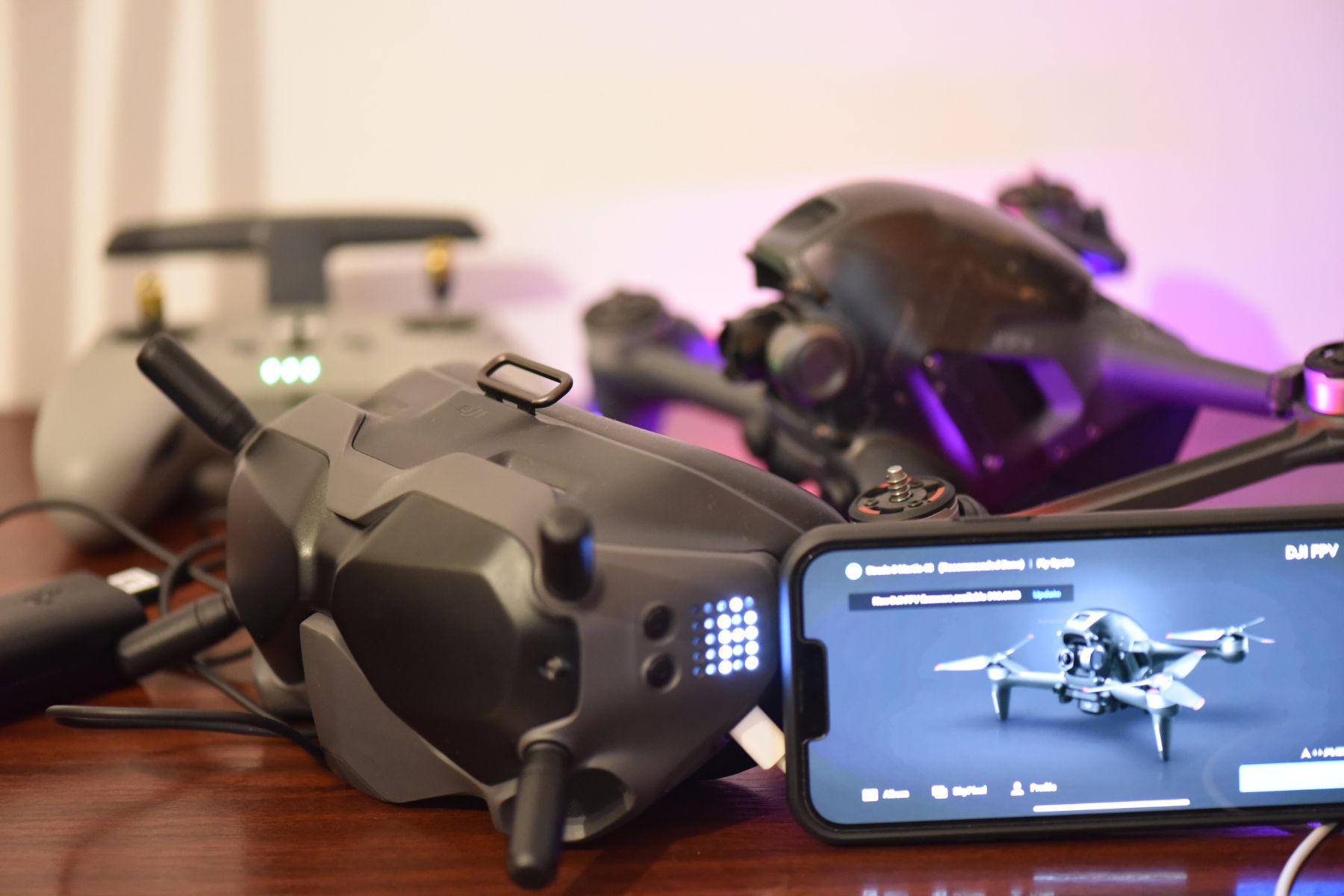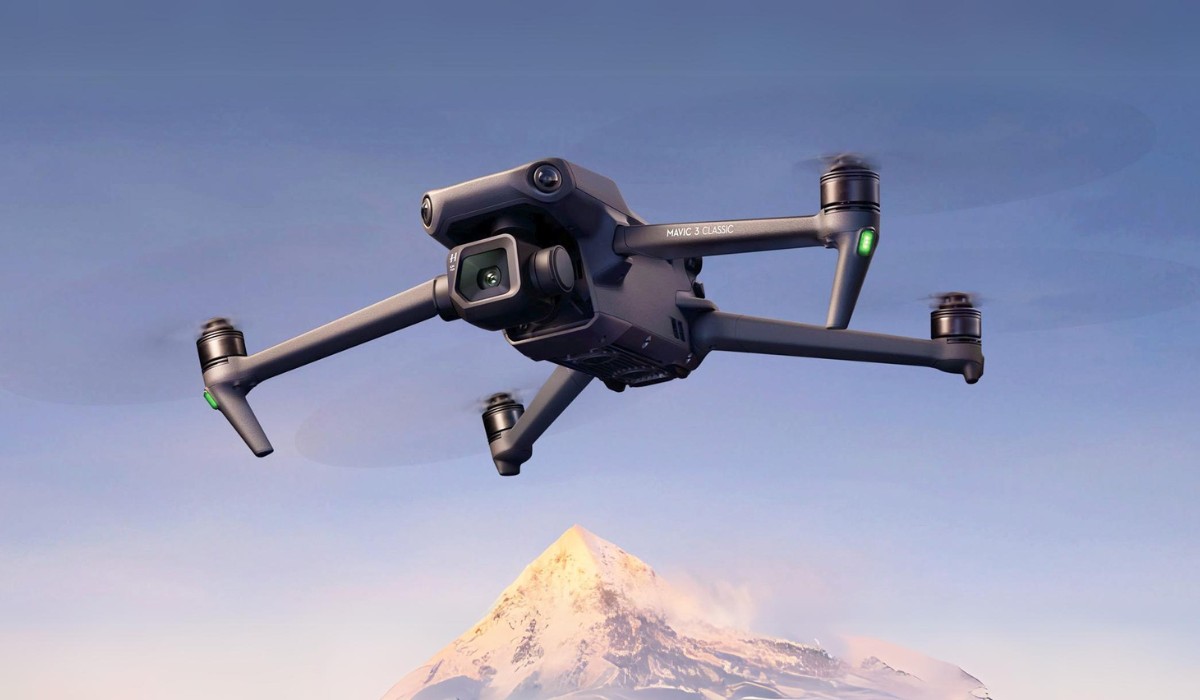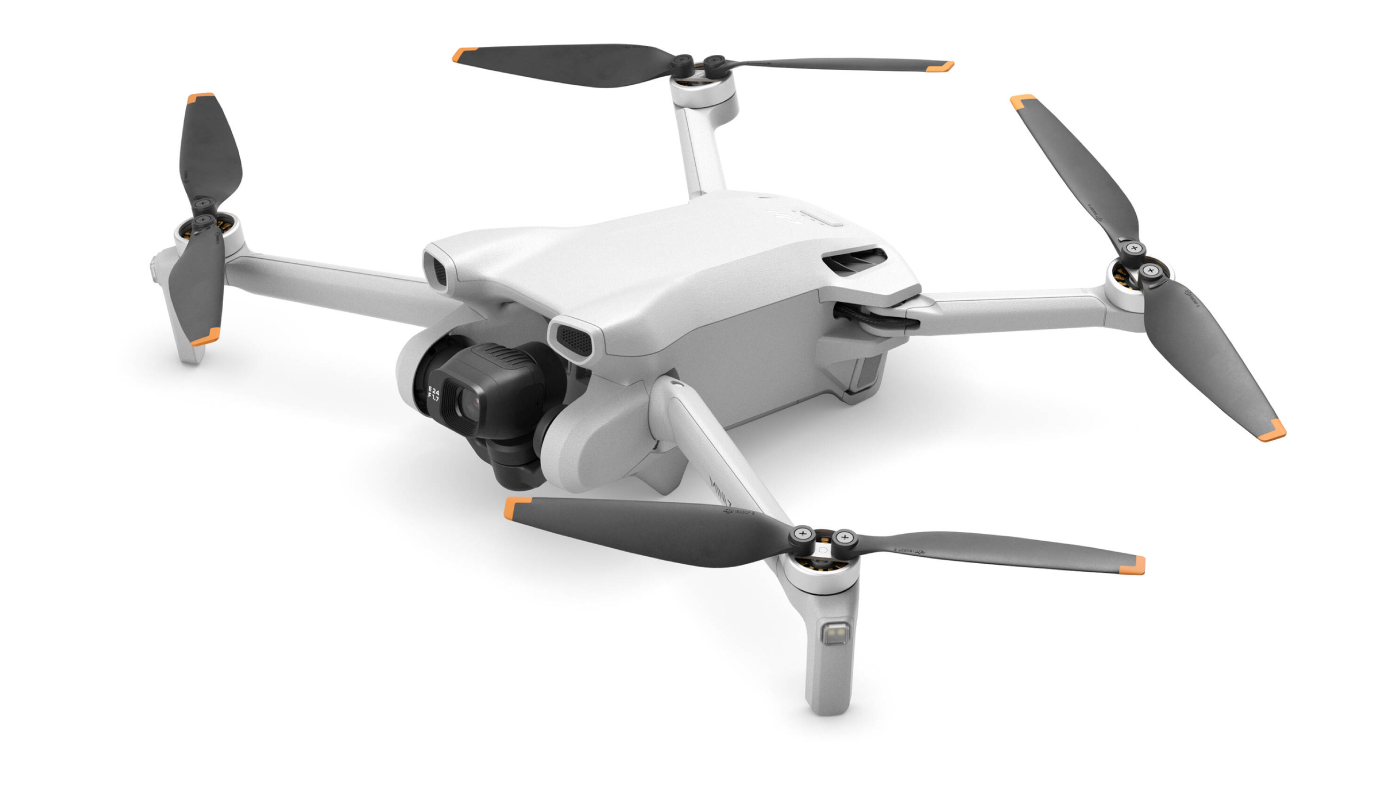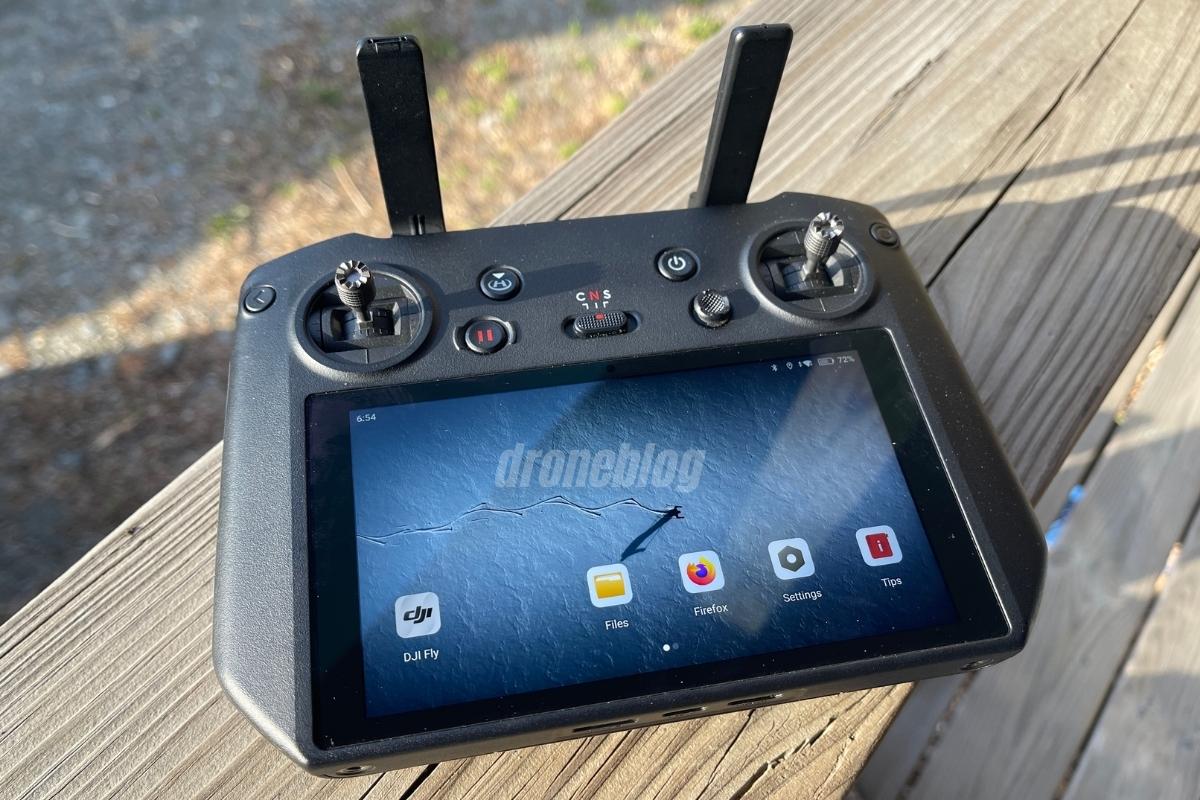Introduction
In recent years, drone cameras have gained significant popularity among photography and videography enthusiasts. With their ability to capture stunning aerial shots, these unmanned aerial vehicles (UAVs) have revolutionized the way we view and experience the world. Drones equipped with high-resolution cameras provide a unique perspective, allowing us to see landscapes, buildings, and events from a bird’s eye view.
But how far can a drone camera actually see? This question has intrigued many drone enthusiasts and professionals alike. The range of a drone camera depends on various factors, including technology, line of sight limitations, and environmental conditions. Understanding these factors is crucial for maximizing the range and obtaining the desired shots.
In this article, we will explain how drone cameras work and delve into the factors affecting their range. We will explore the limitations imposed by line of sight rules and the impact of environmental conditions on the visibility of the drone camera. Additionally, we will examine the maximum range capabilities of different drone cameras and provide tips to extend their range.
It’s important to note that the information provided in this article is primarily relevant to recreational and commercial drones used for photography and videography purposes. Military-grade drones and their camera systems have significantly different capabilities and range specifications.
So, if you’ve ever wondered just how far a drone camera can see and capture, read on to discover the fascinating world of aerial photography and the factors that influence the range of these remarkable devices.
How Do Drone Cameras Work?
Before we delve into the factors affecting the range of drone cameras, let’s first understand how these devices operate. Drone cameras consist of three main components: the drone itself, the camera, and the remote controller.
The drone, also known as the unmanned aerial vehicle (UAV), is an aircraft that is controlled remotely by a human operator. Drones are equipped with a variety of sensors, including GPS, altimeters, and gyroscopes, which allow them to navigate and maintain stability in the air.
The camera is mounted on the drone and is responsible for capturing high-quality photos and videos. Modern drone cameras are designed to capture high-resolution imagery, often with the ability to shoot in 4K or even 8K resolution. These cameras are equipped with stabilization technology to reduce the impact of drone movements and vibrations on image quality.
The remote controller is used by the operator to control the drone’s movements and adjust camera settings. It communicates with the drone through a wireless connection, typically using radio frequencies or Wi-Fi. The remote controller provides real-time feedback on the drone’s position, battery life, and camera settings through a screen or telemetry system.
One of the key features of drone cameras is their ability to stream live video feed to the operator’s device, such as a smartphone or tablet. This allows the operator to see what the camera is capturing in real-time, enabling precise framing and composition of aerial shots.
Drone cameras can be operated in different flight modes, such as manual mode, where the operator has full control over the drone’s movements, or autonomous modes, where the drone can follow pre-programmed flight paths or track a moving subject.
Now that we have an understanding of the basic components and functionalities of drone cameras, let’s explore the factors that influence their range and ability to capture images from a distance.
Factors Affecting the Range of Drone Cameras
The range of a drone camera refers to the maximum distance it can travel from the operator while maintaining a stable connection and capturing high-quality imagery. Several factors influence the range of drone cameras:
- Transmitter Power: The transmitter power of the remote controller plays a crucial role in determining the range of the drone camera. Higher-powered transmitters can transmit signals over longer distances, allowing the drone to fly farther from the operator.
- Frequency Band: Drone cameras typically operate in either the 2.4 GHz or 5.8 GHz frequency band. The 2.4 GHz band offers a longer range but can be more susceptible to interference from other devices, such as Wi-Fi routers or cordless phones. The 5.8 GHz band provides a shorter range but offers better resistance to interference.
- Antenna Design: The design and placement of the antenna on both the drone and the remote controller can significantly impact the range. Antennas with higher gain and better orientation can extend the range of the drone camera by improving signal transmission and reception.
- Battery Life: The battery life of the drone affects its range. As the battery depletes, the drone’s power output decreases, potentially limiting its range. It is crucial to assess the battery life and plan the flight duration accordingly to avoid losing connection during the flight.
- Weather Conditions: Adverse weather conditions, such as strong winds, rain, snow, or fog, can negatively impact the range of a drone camera. These conditions affect the stability and control of the drone, making it more difficult to maintain a stable connection and capture clear imagery from a distance.
- Obstacles and Interference: Physical obstacles, such as trees, buildings, or hills, can obstruct the signals between the drone camera and the remote controller, reducing the effective range. Additionally, other wireless devices operating in the same frequency band can cause interference and affect the range of the drone camera.
Understanding these factors is crucial for optimizing the range of your drone camera and ensuring a smooth and uninterrupted flight experience. By considering the transmitter power, frequency band, antenna design, battery life, weather conditions, and potential obstacles, you can make informed decisions about your flight plans and maximize the range of your drone camera.
Line of Sight Limitations
When operating a drone camera, it is important to understand and adhere to the line of sight rules imposed by regulatory authorities in many countries. Line of sight refers to the visual contact between the operator and the drone, where the operator can see the drone with their naked eye without the assistance of binoculars or other visual aids.
Line of sight limitations are in place to ensure the safety and control of the drone during flight. These rules aim to prevent accidents, collisions with other aircraft, and potential damage to property or individuals on the ground.
According to these regulations, the drone must be operated within the operator’s visual line of sight at all times. This means that you should be able to see the drone and its position, orientation, and movements with unaided vision. Flying the drone beyond the line of sight is typically not allowed, unless special permission is obtained for specific scenarios, such as long-range inspection or search and rescue operations.
Line of sight limitations directly impact the range of the drone camera. As the drone moves farther away from the operator, it becomes more challenging to maintain visual contact and control over the device. Therefore, it is essential to keep the drone within a reasonable range where you can still see and control it effectively.
To ensure compliance with line of sight regulations, drone operators can employ techniques such as using binoculars or FPV (First Person View) goggles, which provide a live video feed from the drone camera to the operator’s device. While these tools can enhance visibility, they should not replace the operator’s direct visual contact with the drone.
It is crucial to understand and respect the line of sight limitations when operating a drone camera. By doing so, you can ensure the safety of your flight and comply with the regulations set forth by aviation authorities in your jurisdiction.
Clear vs. Obstructed Environments
The environment in which you fly your drone camera plays a significant role in determining its range and capabilities. The visibility and presence of obstacles can either enhance or limit the distance your drone can travel and capture clear imagery.
In a clear environment, such as an open field or a wide expanse of water, with minimal obstacles, the drone camera can achieve its maximum range. The absence of physical barriers allows for better signal transmission between the drone and the remote controller, resulting in a stronger connection and extended range.
However, in obstructed environments, such as densely populated urban areas, forests, or mountainous regions, the range of the drone camera can be significantly reduced. Buildings, trees, mountains, and other structures can block or weaken the signals between the drone and the remote controller, causing interference and limiting the effective range.
When operating in obstructed environments, it is essential to be mindful of potential signal interference and adjust your flight plans accordingly. For example, flying closer to the drone or using a higher-powered transmitter can help maintain a stable connection and extend the range in such environments.
Moreover, understanding the limitations imposed by the environment can help you plan your shots effectively. By considering the presence of obstacles, you can strategically position your drone for optimal visibility and capture breathtaking imagery from unique perspectives.
When flying in an obstructed environment, it is also important to exercise caution and ensure the safety of bystanders and surrounding property. The risk of collisions with buildings, trees, or other obstacles is higher in these environments, so maintaining control and keeping a close eye on the drone’s movements is essential.
In summary, the visibility and presence of obstacles in the environment can significantly impact the range and capabilities of your drone camera. Understanding these factors and adapting your flight plans accordingly will help you optimize your shots and ensure a safe and successful flight experience.
Maximum Range of Different Drone Cameras
Drone cameras come in various models and configurations, each with its own maximum range specifications. The range of a drone camera depends on several factors, including the technology used, transmitter power, and other design considerations.
Entry-level consumer drones typically have a range of around 100 to 300 meters, which is sufficient for most recreational purposes. These drones are designed for shorter-range flights and are suitable for capturing aerial shots in close proximity to the operator.
Mid-range consumer drones usually offer a range of 500 to 1000 meters. These drones often come equipped with more advanced technology, such as dual-frequency transmission systems or advanced signal processing, which allows for better range and signal stability.
Professional-grade drones, designed for commercial use and aerial photography/videography, can have even greater range capabilities. These drones can often reach distances of up to several kilometers, enabling photographers and filmmakers to capture breathtaking footage from long distances.
Additionally, long-range drones, also known as “FPV racing drones,” are specifically built for speed and range. They can achieve a range of over 5 kilometers, allowing for incredible high-speed flights and capturing footage from vast distances.
It is important to note that the maximum range specifications provided by manufacturers are theoretical and ideal conditions, which means real-world results may vary. Factors such as environmental conditions, line of sight limitations, and interference can all impact the actual range you can achieve with your drone camera.
If you are looking to maximize the range of your drone camera, consider investing in a model with longer-range capabilities. Look for drones with higher transmitter power, dual-frequency transmission systems, and advanced signal processing technology to enhance the range and stability of your drone’s connection.
Remember to always comply with local regulations and operate your drone camera within your visual line of sight, ensuring the safety of yourself, others, and property in the vicinity.
By understanding the maximum range capabilities of different drone cameras and selecting a model that aligns with your specific needs, you can capture stunning aerial imagery from impressive distances and unlock new creative possibilities.
Tips to Extend the Range of Your Drone Camera
If you’re looking to extend the range of your drone camera and capture aerial shots from greater distances, there are several tips and techniques you can employ:
- Use a High-Gain Antenna: Consider upgrading the antennas on both your drone and remote controller to high-gain antennas. These antennas can amplify the signal strength and improve the range and stability of your drone’s connection.
- Keep Your Drone at a Higher Altitude: Flying your drone at a higher altitude can improve its range. As the drone ascends, it gets a clearer line of sight and is less affected by obstacles on the ground that might interfere with the signal.
- Choose Optimal Weather Conditions: Fly your drone camera in clear weather conditions, with minimal wind and precipitation. Adverse weather can negatively impact signal transmission and stability, reducing the effective range.
- Avoid Interference: Be aware of other wireless devices, such as Wi-Fi routers or cordless phones, that operate on the same frequency band as your drone. Flying in areas with minimal wireless interference can help maintain a strong and stable connection.
- Upgrade Your Transmitter: Consider upgrading to a more powerful transmitter to improve the range of your drone camera. Higher-powered transmitters can transmit signals over longer distances, extending your drone’s range.
- Fly in Open Spaces: Choose locations with ample open space to fly your drone. Avoid densely populated areas or areas with tall buildings or dense vegetation, as they may obstruct the signals between the drone and the remote controller.
- Monitor Battery Life: Keep a close eye on your drone’s battery life and plan your flight duration accordingly. Low battery levels can reduce the drone’s power output and may lead to a loss of connection during flight.
- Ensure a Clear Line of Sight: Always maintain a clear line of sight between yourself and the drone. Avoid flying behind obstacles or out of your direct view, as it can weaken the connection and compromise control over the drone.
- Utilize External Range Extenders: Consider using external range extenders or signal boosters to improve the range of your drone camera. These devices can amplify the signal and extend the distance your drone can travel while maintaining a stable connection.
By following these tips and techniques, you can maximize the range and capabilities of your drone camera, allowing you to capture stunning aerial imagery from greater distances. However, always remember to comply with local regulations and prioritize safety during your flights.
Legal and Safety Considerations
When operating a drone camera, it is essential to be aware of the legal and safety considerations to ensure a responsible and compliant flight experience. Here are some key considerations to keep in mind:
- Familiarize Yourself with Local Regulations: Research and understand the drone laws and regulations in your jurisdiction. Different countries and regions may have specific rules regarding where and how you can fly your drone camera. Familiarize yourself with the laws to avoid any legal issues.
- Register Your Drone: In some countries, drones above a certain weight limit need to be registered with aviation authorities. Ensure that you comply with registration requirements to operate your drone camera legally.
- Maintain Visual Line of Sight: Adhere to the line of sight rules and regulations while operating your drone camera. Keep the drone within your visual line of sight at all times, ensuring better control and mitigating the risk of accidents.
- Respect Privacy: Be mindful of people’s privacy when flying your drone camera. Avoid capturing images or footage of individuals without their consent, and respect their right to privacy. Additionally, refrain from flying your drone over private property without obtaining proper permission.
- Stay Away from Restricted Areas: Avoid flying your drone camera near airports, military installations, or other restricted areas. These are considered no-fly zones and can pose a threat to aviation or national security.
- Follow Safety Guidelines: Adhere to safety guidelines provided by the drone manufacturer. This includes properly maintaining your drone, regularly inspecting its components, and following recommended pre-flight and post-flight checks to ensure safe operation.
- Ensure Sufficient Battery Life: Always ensure that your drone has sufficient battery life before taking off. Plan your flight duration accordingly to prevent the drone from losing power and losing control during the flight.
- Be Mindful of Weather Conditions: Pay attention to weather forecasts and avoid flying your drone camera in adverse weather conditions. High wind, rain, or fog can impair visibility, affect drone stability, and compromise the safety of the flight.
- Take Liability Insurance: Consider obtaining liability insurance for your drone camera. This can provide coverage in case of damages or accidents resulting from the operation of your drone. Check with your insurance provider for policies tailored specifically for drones.
Adhering to these legal and safety considerations will not only ensure a responsible flight experience but also help to maintain a positive image for the drone community as a whole. By following the rules and guidelines, you can enjoy the creative and exhilarating possibilities of your drone camera while prioritizing safety and respecting the rights and privacy of others.
Conclusion
Drone cameras have revolutionized aerial photography and videography, allowing us to capture stunning imagery from unique perspectives. Understanding the factors that affect the range of drone cameras is crucial for maximizing their capabilities and achieving the desired shots.
We explored how drone cameras work, with their three main components: the drone itself, the camera, and the remote controller. By understanding the technology behind drone cameras, we gain insight into their capabilities and limitations.
We discussed the factors that influence the range of drone cameras, such as transmitter power, frequency band, antenna design, battery life, weather conditions, and obstacles. Recognizing these factors empowers drone operators to make informed decisions and optimize their drone’s performance in various scenarios.
Line of sight limitations play a significant role in the range of drone cameras. Operators must ensure they comply with regulations and maintain visual contact with their drones, prioritizing safety and control during flight.
We explored the impact of clear versus obstructed environments on the range of drone cameras. While open spaces allow for greater range, obstructed environments pose challenges due to signal interference. Careful planning and adaptation can help mitigate these challenges and capture stunning shots even in less favorable conditions.
Different models of drone cameras offer various maximum range specifications. Choosing a drone with the appropriate range for your specific needs can open up new possibilities for capturing incredible aerial imagery.
Lastly, we discussed tips to extend the range of your drone camera, including using high-gain antennas, flying at a higher altitude, selecting optimal weather conditions, avoiding interference, upgrading transmitters, choosing open spaces, monitoring battery life, ensuring line of sight, and utilizing external range extenders.
However, it is crucial to consider the legal and safety considerations related to flying a drone camera. Understanding and complying with the regulations in your jurisdiction, respecting privacy, and prioritizing the safety of yourself and others will contribute to a responsible and enjoyable flight experience.
In conclusion, by understanding the factors influencing the range of drone cameras, optimizing their performance, and adhering to legal and safety considerations, you can unlock the full potential of your drone camera and capture breathtaking aerial shots that truly captivate your audience.







